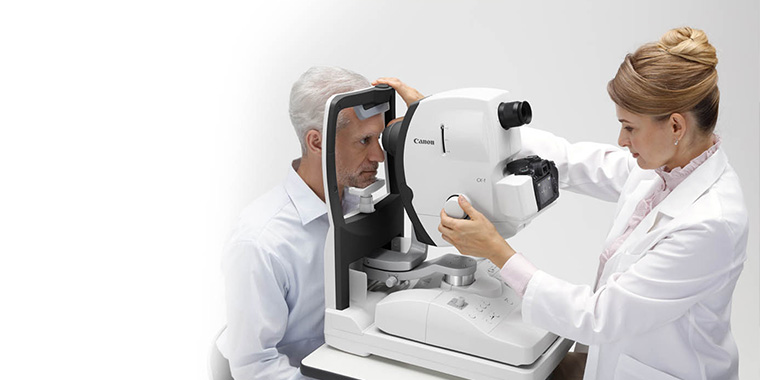Neurologist in Andalusia: Leading Specialists and Clinics Detailed
Neurologist in Andalusia: Leading Specialists and Clinics Detailed
Blog Article
The Advantages And Disadvantages of Various Refractive Surgical Treatments for Boosted Eyecare

LASIK Surgery
LASIK surgery is a frequently executed refractive treatment that intends to fix vision issues such as astigmatism, nearsightedness, and farsightedness. This surgical strategy has gotten popularity as a result of its performance in giving patients with clearer vision and decreasing their dependence on glasses or get in touch with lenses. During the treatment, a slim flap is created on the cornea, and a laser is used to reshape the underlying tissue, correcting the refractive error. The flap is then rearranged, permitting for fast recovery and very little pain for the client.
One of the main advantages of LASIK surgery is the quick improvement in vision experienced by several individuals. It is vital for individuals considering LASIK surgery to go through a comprehensive analysis by an eye care expert to determine if they are ideal prospects for the procedure.
PRK Treatment
The PRK treatment, additionally known as Photorefractive Keratectomy, is a kind of refractive surgical procedure that intends to fix vision problems comparable to LASIK surgical treatment. Unlike LASIK, which involves producing a flap in the cornea, PRK works with the surface layer of the cornea. During the PRK procedure, the external layer of the cornea, called the epithelium, is gotten rid of to allow improving of the underlying corneal cells with an excimer laser. This reshaping aids to correct refractive errors such as nearsightedness, farsightedness, and astigmatism.
Among the benefits of PRK over LASIK is that it gets rid of the threat of flap-related problems since no flap is produced during the surgery. This can be helpful for individuals with slim corneas or those involved in get in touch with sporting activities where eye trauma is a possibility. Nonetheless, the recuperation time for PRK is generally much longer contrasted to LASIK, as the external layer of the cornea requires time to restore after the treatment. Despite the longer recuperation period, PRK can be an ideal choice for people looking for vision adjustment surgery.
SMILE Surgical Procedure
An innovative refractive surgical treatment strategy gaining popularity in the field of ophthalmology is SMILE Surgical procedure. Small Incision Lenticule Removal (SMILE) is a minimally invasive procedure that corrects vision by reshaping the cornea using a femtosecond laser. Unlike conventional LASIK surgical procedure, SMILE Surgical procedure entails creating a little cut in the cornea to draw out a lenticule, which causes much less disruption to the corneal framework and potentially faster recuperation times.
One of the main benefits of SMILE Surgical treatment is its capability to treat myopia (nearsightedness) and astigmatism with high precision, leading to excellent aesthetic end results for people. The minimally invasive nature of the procedure likewise lowers the risk of problems such as completely dry eye disorder, making it a favorable choice for people seeking refractive surgery.

LASEK Strategy
Having actually explored the advantages and factors to consider of SMILE Surgery, one more notable refractive surgical treatment technique worth taking a look at is the LASEK Strategy. LASEK, which stands for Laser-Assisted Subepithelial Keratectomy, is a kind of laser eye surgical procedure that aims to correct refractive errors such as myopia (nearsightedness), hyperopia (farsightedness), and astigmatism.
Unlike LASIK, LASEK does not entail producing a corneal flap. Instead, throughout a LASEK procedure, the doctor makes use of a watered down alcohol option to loosen up the thin external layer of the cornea, recognized as the epithelium.
One of the primary benefits of LASEK is that it can be appropriate for people with slim corneas that might not be great candidates for LASIK. Furthermore, LASEK typically leads to minimal post-operative discomfort and a quicker healing time compared to PRK. Nonetheless, the aesthetic recuperation process with LASEK might be somewhat longer than with LASIK.
Implantable Call Lenses
Implantable Get in touch with Lenses provide a long-term vision correction remedy for individuals looking for an option to conventional contact lenses or glasses. These lenses, also referred to as phakic intraocular lenses, are operatively placed right into the eye to fix refractive mistakes such as nearsightedness (nearsightedness), hyperopia (farsightedness), and astigmatism. eye center andalusia. Unlike conventional weblink get in touch with lenses that remain on the surface of the eye, implantable get in touch with lenses function within the eye itself, providing clear vision without the demand for everyday upkeep or elimination
Among the vital advantages of implantable contact lenses is their permanence. As soon as inserted, they can stay in the eye forever, offering steady and constant vision correction. Additionally, these lenses can be an description outstanding option for people who are not great prospects for laser eye surgery or who favor a reversible vision improvement procedure.
Nonetheless, implantable contact lenses do bring some threats, including the potential for cataracts or boosted eye stress. It is crucial for people considering this choice to talk to an eye care specialist to identify if implantable get in touch with lenses are the right option for their certain requirements and eye health.
Verdict
In final thought, each type of refractive surgical procedure has its very own benefits and downsides. LASIK surgical procedure is preferred for its quick recovery time, while PRK treatment may be suitable for patients with thin corneas.

Overall, SMILE Surgical treatment presents an encouraging option for individuals looking to boost their vision with refractive surgery.
Report this page